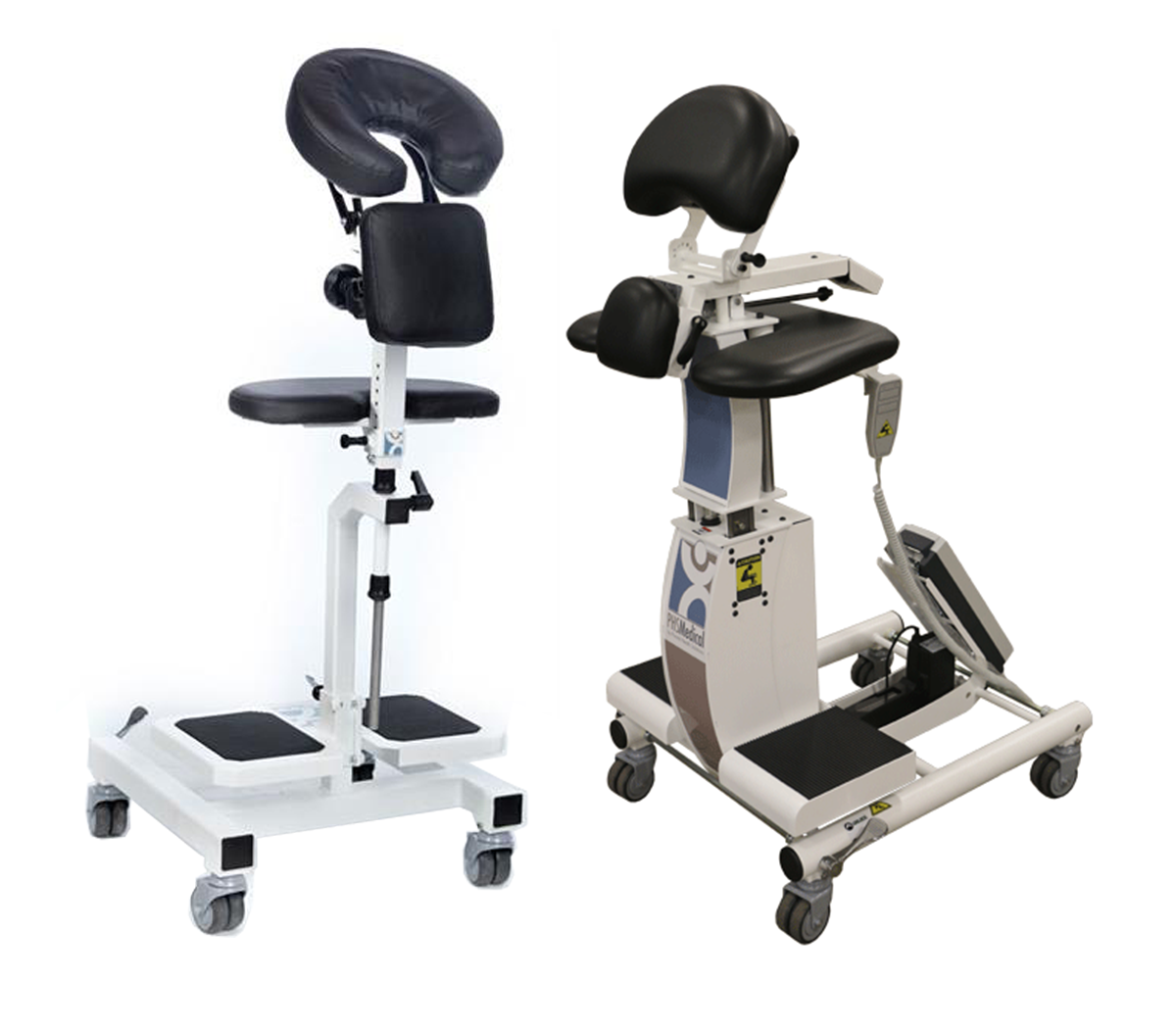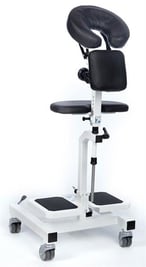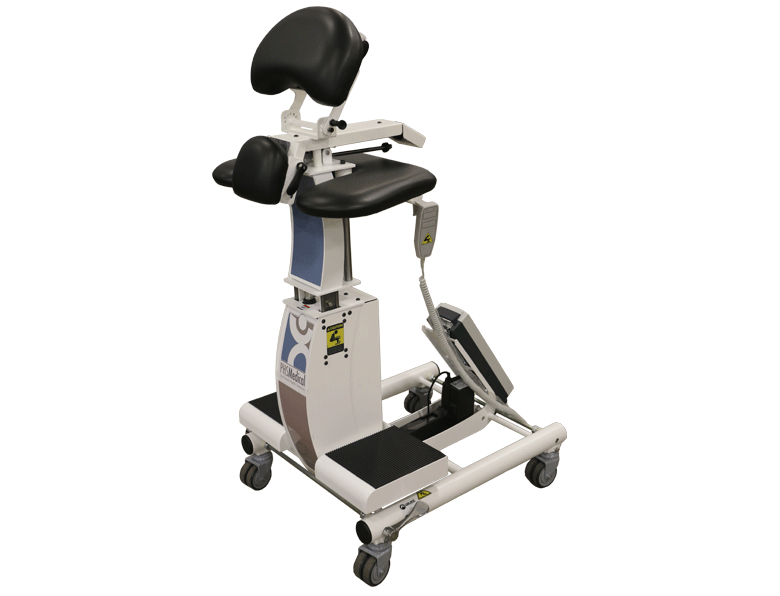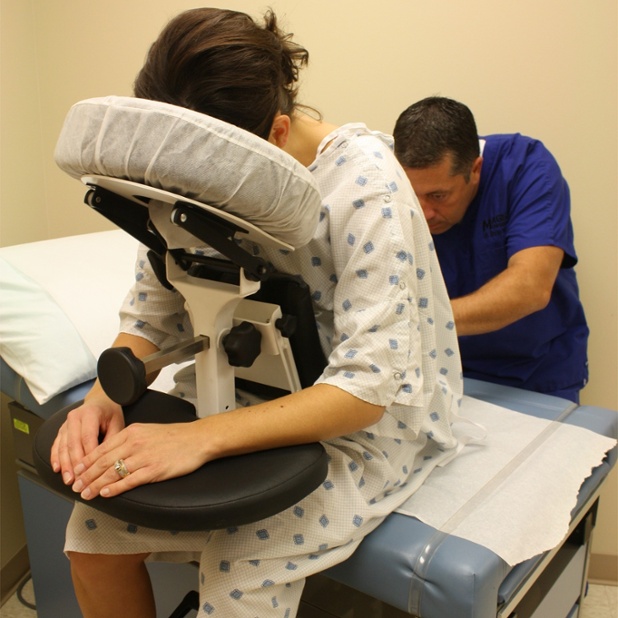Rethink patient safety with PHS Medical's patented Epidural Positioning Device and Electric Epidural Positioning Device. The EPD and E-EPD feature unique torso positioning for proper cervical alignment to position patients safely and comfortably during epidural procedures.
Patented in 2001, the Epidural Positioning Device is a landmark device designed by an anesthesiologist that positions patients correctly and comfortably by encouraging cervical, thoracic and lumbar flexion while maintaining a solid and stable position. Adjustable chest, arm and head support ensures that patients of every body type and size can be accommodated and the spine remains immobile during epidural placement.
To better understand the EPD and E-EPD, we've outlined the main similarities and differences between them.
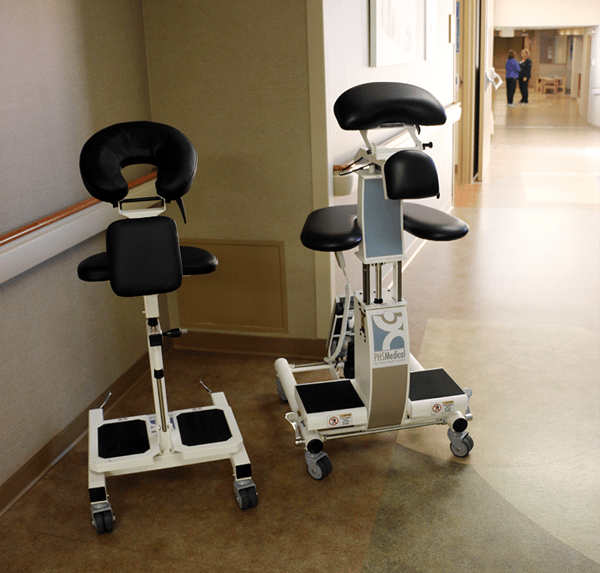 The EPD (left) and E-EPD (right) can easily be transported from room to room for fast, effective epidural placements.
The EPD (left) and E-EPD (right) can easily be transported from room to room for fast, effective epidural placements.
Similarities
Correct Positioning
Both the EPD and E-EPD are designed to encourage cervical, thoracic and lumbar flexion while maintaining a solid and stable position. Proper positioning reduces safety and positioning concerns and helps the anesthesiologist perform a successful block.
Supports Various Patient Sizes
The height range of both devices is 50" - 60" and they can safely accommodate different sized tables/beds and patients. With a sturdy load capacity of 600 pounds, patients of various sizes can be securely supported by the EPD and E-EPD.
Where It's Used
They are both predominantly used in labor & delivery suites and surgical departments, but they’re also beneficial in pain management clinics. Anywhere epidural or spinal anesthesia is administered while the patient is seated, the EPD or E-EPD can be utilized. In addition, some hospitals use them for Thoracentesis procedures.
Easy to Move & Lock
Both the EPD and E-EPD have a medical grade profile locking caster system designed for easy transport and stability.
Differences
Adjustments
The main difference between the EPD and E-EPD is how you adjust them. An electronic hand control adjusts the E-EPD to the correct height and foot position for each patient and easy-to-operate mechanical lock and release systems adjust the chest, arm and head pieces. On the EPD, manual controls easily adjust the height, foot, chest, arm and head supports.
Size of Device
|
- Weight: 54 lbs. - Dimensions: 20.5" W X 30" D x 50"-60"H |
- Weight: 130 lbs. -Dimensions: 28" W X 29" D x 50"-60"H |
Support Pieces
The chest piece on the EPD is slightly larger than the E-EPD's chest piece and features an interchangeable torso cushion containing one flat and one elevated cushion. In addition, the EPD offers a six position adjustable arm rest sized 16.5"W x 10"D that is positioned 32" - 43" from floor height. The E-EPD offers a six inch arm rest adjustment with a wider arm rest sized 21"W x 15.5"D.
Operating Requirements
The E-EPD comes with two rechargeable batteries that fully charge in about six hours and last up to 100* cycles each (*Based on Load). The EPD does not require batteries for operation and is manually adjusted.
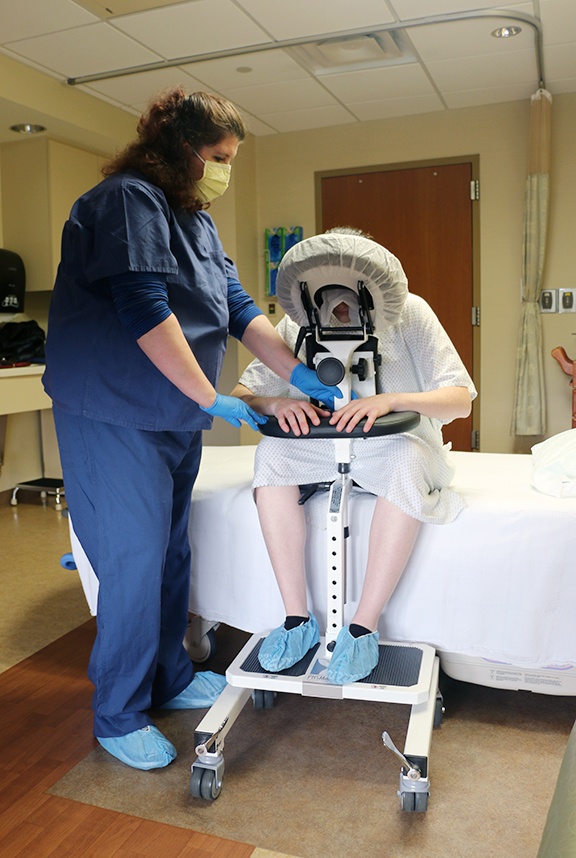 |
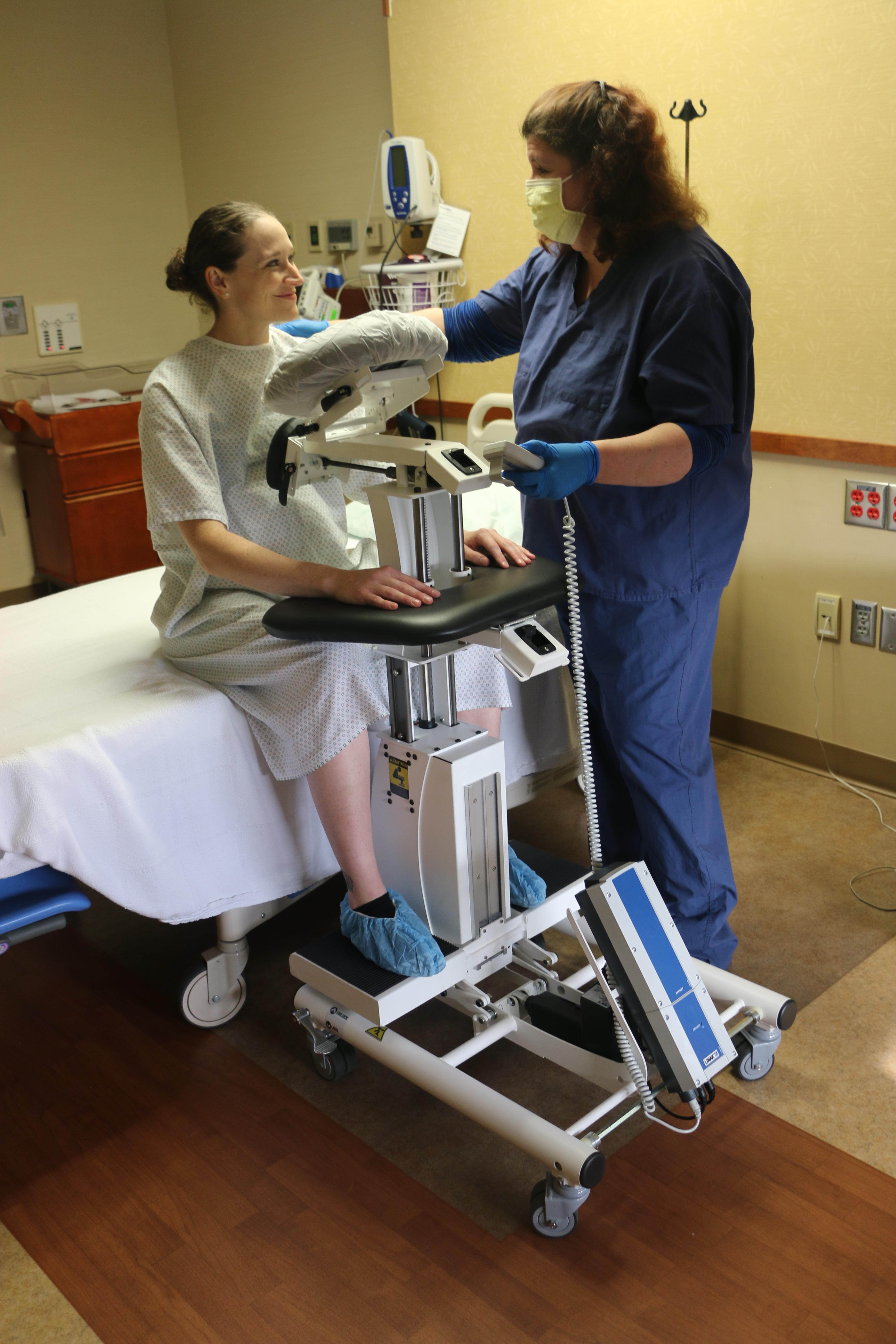 |
Check out this related blog: 8 Frequently Asked Questions about the EPD & E-EPD
